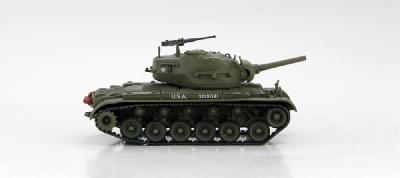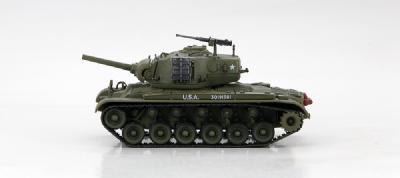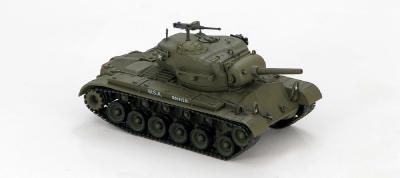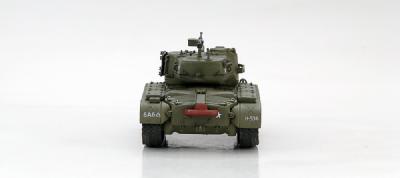Hobby Master Archive
Ground Power 1/72
M26 Pershing
M45 Pershing 105mm 6th Tank Battalion, Pusan Perimeter, Korea 1950
The M45 Pershing was based on the M26 hull and turret but with a short-barreled 105mm Howitzer replacing the long-barreled 90mm gun. This was the same gun used on the 105mm Howitzer Shermans. Capable of firing a variety of high explosive smoke and anti-tank rounds provisions were made to carry 74 rounds of the 105mm ammunition. It retained the co-axial and hull mounted .30 caliber machine guns as well as the turret roof mounted .50 caliber machine gun found on earlier models. Since the 105mm barrel was substantially shorter and lighter than the 90mm gun it meant thicker armor could be applied to the turret and mantlet.
The M45 was designed to provide a close-support function and when the Korean War broke out in the summer of 1950 the 6th Tank Battalion was deployed with their M45s. These vehicles saw limited action in Korea guarding the Pusan Perimeter and in the summer of 1950 providing support to the 1st Cavalry Division. Together these units were part of the breakout from the Pusan region in an effort to move north and join up with the UN forces that had landed at Inchon in mid-September. After this action very little is documented about the use of the M45 in Korea. It is believed that the 6th Tank Battalion was the only unit to use the M45 in Korea and once the situation had at the 38th parallel these tanks were deemed unnecessary and were withdrawn from the battlefield. Between 1949 and 1951 all but a few M45s were converted to M46 Pattons and the M45 was never exported to other countries. By July 1, 1954 there were no M45s left in the US Army inventory.
| Added to archive | 2015-11-19 |
| Last modified | 2015-11-19 |






